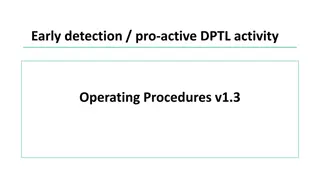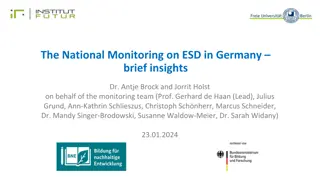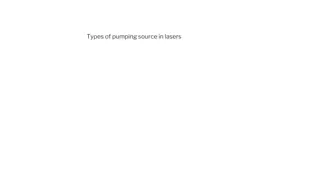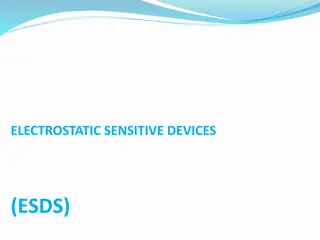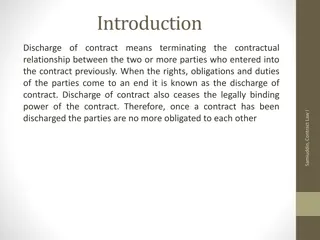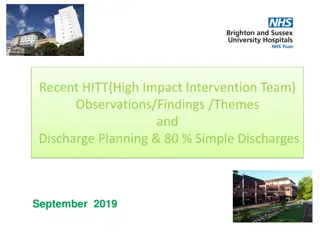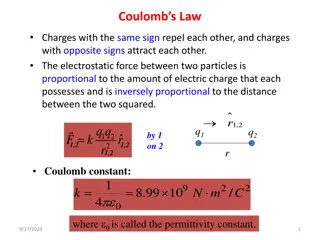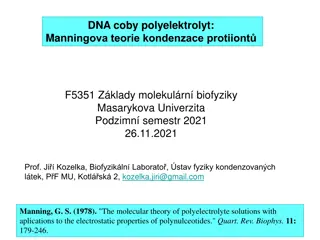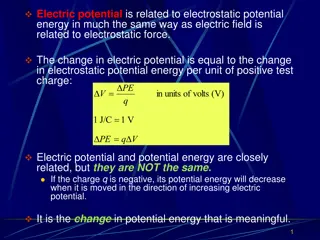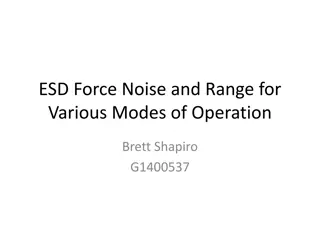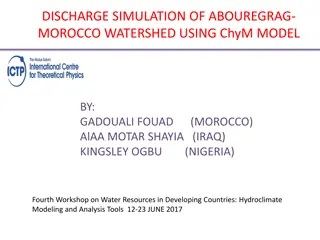Understanding Electrostatic Discharge (ESD) in Precision Electronics
Explore the world of Electrostatic Discharge (ESD) and how it impacts precision electronics like op-amps and semiconductors. Learn about ESD generation, IC device sensitivity thresholds, ESD damage mechanisms, ESD protection methods, and device ESD robustness testing. Dive into the crucial aspects of ESD handling and protection to ensure the reliability and longevity of sensitive electronic components.
Download Presentation

Please find below an Image/Link to download the presentation.
The content on the website is provided AS IS for your information and personal use only. It may not be sold, licensed, or shared on other websites without obtaining consent from the author. Download presentation by click this link. If you encounter any issues during the download, it is possible that the publisher has removed the file from their server.
E N D
Presentation Transcript
Electrostatic Discharge (ESD) TIPL 1401 TI Precision Labs Op Amps Presented by Marek Lis
Electrostatic Discharge (ESD) Large potential difference (kV) causes static discharge Insulators allow for large static buildup
ESD Generation vs. Relative Humidity (RH) Means of Generation Walking across carpet Walking across vinyl tile Worker at bench Poly bag picked up from bench Chair with urethane foam Source: ESD Association 10-25% RH 35,000V 12,000V 6,000V 20,000V 18,000V 65-90% RH 1,500V 250V 100V 1,200V 1,500V ESD Generation vs. Human Awareness Discharge >3500V >5000V >8000V Source: http://emp.byui.edu/fisherr/esd/esd_control_handbook.pdf Awareness Feel Hear See Some ICs can be damaged at <10V ! You will not even feel the ESD ! 3
Typical IC Device Sensitivity Thresholds Threshold Susceptivity (V) 10-100 30-1800 60-100 60-2000 100+ 200-3000 140-7000 150-500 190-2500 300-2500 300-3000 300-7000 500+ 500-1000 500-2500 Device Type MOSFET VMOS NMOS GaAsFET EPROM CMOS JFET SAW Op-AMP Schottky Diodes Film Resistors Bipolar Resistors ECL SCR Schottky TTL Source: http://emp.byui.edu/fisherr/esd/esd_control_handbook.pdf 4
ESD Can Damage Semiconductors Oxide Gate Drain Source Oxide is very thin (nm) ESD pulse can break down thin gate oxide and other structures 5
Out-of-Circuit vs. In-Circuit PCB assembly Fully-assembled PCB Factory test End product Note: ESD robustness depends on device and environment Note: ESD robustness depends on system design, packaging, and device 6
ESD Handling and Protection Anti-Static Work Surface Anti-Static Box Anti-Static Wrist Strap Anti-Static Bag 7
Characterization of Device ESD Robustness Comprehensive test of device Using automated equipment Most specified parameters tested Apply ESD Pulse Simulator generates repeatable pulses Different levels are applied, 1kV, 2kV Different pin combinations are tested ESD Simulator Repeat Comprehensive Test Look for failures ESD specification set by highest pulse that doesn t damage device 8
Types of ESD Simulator Pulses 2 T IC1 2k L1 7.5u R1 1.5k Models ESD Diode IC SW1 1 AM1 500m t C1 100p Vout R2 10 Human Body Model (HBM) 0 C2 2p 15 10 + Vout A 5 AM1 0 0 50n 100n 150n 200n Time (s) Models ESD Diode 4 IC1 200 T R1 10 L1 500n IC SW1 2 Vout AM1 0 t Machine Model (MM) C1 100p R2 10 -2 40 C2 2p 20 + Vout A AM1 0 -20 0 50n 100n 150n 200n Time (s) 3.06 T Models ESD Diode AM1 L1 5n R1 20 Vout -4.39 250.00 + Rdut 10 VG1 Charged Device Model (CDM) VG1 Cp 2p 0.00 340.08 + Vout A AM1 -128.54 0.00 2.00n 4.00n 9 Time (s)
ESD Protection Inside an IC Series Resistance Steering Diodes Absorption Device 10
ESD Protection with Pulse Applied Diode D3 guides the ESD pulse to the absorption device 11
ESD Diode Specifications Input Connection Pad Specification Typical Value Diode Drop (250mA) 0.7 V Diode Drop (2A) 1 V ESD diodes Pulse Current A (for ns) Continuous Current 10 mA Leakage Current 0.5 pA (25 C, typical) 500 pA (125 C, typical) Parasitic Capacitance 1 pF to 2 pF 12
Absolute Maximum Ratings VALUE UNIT 20 (+40, single supply) (V-) - 0.5 to (V+) + 0.5 (V+) - (V-) + 0.2 10 Continuous -55 to +150 -55 to +150 +150 4 Supply voltage V Common-mode Differential V V Voltage Signal input terminals Current mA mA C C C kV Output short circuit Operating temperature Storage temperature Junction temperature Human Body Model (HBM) Electrostatic discharge (ESD) ratings Charged device model (CDM) 1 kV 15
Multiple-Choice Quiz ESD voltage as low as _________can cause damage to some semiconductor devices. a) 10V b) 50V c) 100V d) 1000V Humans can just feel ESD at_________. a) 3500V b) 2000V c) 1000V d) 100V (T/F) The absolute maximum input current is determined by the ESD diodes and is generally set to 10mA. a) True b) False 16
Multiple-Choice Quiz Exceeding the __________ will cause damage to the device. a) Specified power supply range b) Absolute maximum power supply range c) Pulsed power specification d) Over-current protection specification Internal Op Amp ESD cells are designed to_________. a) Protect against all EOS events once assembled in a PCB b) Provide latch-up-free operation under all EOS events c) Prevent ESD damage from out-of-circuit events d) Discharge any nearby lightning strikes 17
Multiple-Choice Quiz (T/F) ESD protective devices such as an ESD work surface or ESD wrist straps use very low resistance (0 ) to quickly discharge ESD charge to ground. a) True b) False The absorption device is designed to _________. a) Turn on and limit the supply voltage during an electrical overstress event b) Turn on and limit the supply voltage during an ESD event c) Turn on and limit the input current during an ESD event. d) Turn on and limit the supply current during an ESD event. 18
Electrical Overstress 1 TIPL 1411 TI Precision Labs Op Amps Presented by Marek Lis
ESD vs. EOS Whats the Difference? ESD Electrostatic discharge Short duration event (1-100ns) High voltage (kV) Fast edges Both in-circuit and out-of-circuit EOS Electrical overstress Longer duration event Milliseconds or more Can be continuous Lower voltage May be just beyond absolute maximum ratings In-circuit event only 20
EOS Event Overvoltage Input LDO can t sink current, so voltage rises from input overstress voltage Supply voltage rises to 14.3 V = 15 V 0.7 V Overstress voltage 21
Absorption Device Latches Latched absorption device draws large current Absorption device is latched at low impedance 22
Transient Voltage Suppressor (TVS) Diode I IF Symbol VBR VR VC VF IBR IR IF IPP Parameter Breakdown voltage Stand-off voltage Clamping voltage Forward voltage drop Breakdown Current @ VBR Reverse Leakage @ VR Forward Current @ VF Peak Pulse current @ VC VC VBR VR V VF IR IBR IPP 23
TVS Diode and Series Resistance TVS limits supply voltage and sinks current IIN = (15 V 0.7 V 7V)/1k IIN = 7.3 mA Overstress voltage Absorption device does not turn on 24
Power Supply Sequencing High impedance from previous stage Current finds internal paths abnormal operation! Floating pin 25
Power Supply Sequencing Current flows from positive to negative supply via TVS diode 26
Schottky Diodes Input Protection Rf +15V D5 OPA192 D1 Rg - +15V Connected to outside world D2 Vout D1 D3 Rp + Internal Connection connection Internal D2 D4 Connected to outside world -15V D6 -15V 27
Schottky Diodes Output Protection Rf +15V Rp = 10 to 20 to minimize impact on output swing D5 OPA192 +15V D1 Rg - D7 D9 Rp D2 Vout D3 D10 Internal connection + D8 Connected to outside world outside world Connected to Internal Connection D4 -15V D6 -15V 28
Multiple-Choice Quiz EOS damage occurs when you exceed ______. a) The specified minimum voltage level. b) Two times the maximum specified voltage level. c) The absolute maximum voltage rating. d) The maximum allowable frequency for input signals. (T/F) EOS events are typically longer in duration than ESD events. a) True b) False 29
Multiple-Choice Quiz A TVS diode is ___________. a) A crystal diode used to minimize RF interference. b) A Zener diode optimized for fast turn on time and large power dissipation. c) A diode with a low forward voltage that is placed in parallel with ESD diodes. d) A specialized diode that minimizes leakage over temperature. Positive LDO (low-drop-out) linear voltage regulators can _________. a) Sink but not source current b) Source and sink current equally c) Source but not sink current 30
Multiple-Choice Quiz The goal of the TVS diode is to _________. a) Limit the input current to less than 10mA during EOS events b) Limit the supply voltage to less than the absolute maximum during EOS c) Direct EOS energy to an absorption device. d) Maintain the temperature of the device during EOS What generally limits the resistance which can be connected to the output of an amplifier? a) The amplifier bandwidth. b) The amplifier output swing c) The amplifier slew rate d) The amplifier offset drift. 31
Multiple-Choice Quiz (T/F) Applying an overstress voltage to a device input can cause the absorption device to latch on and draw excessive current. a) True b) False Assume than an EOS event turns on the absorption device while the IC is powered on. Once the EOS event ends, the absorption device _____________. a) Will return to normal operation b) Will return to normal operation with degraded performance c) Will continue to draw excessive current until power is cycled. 32





